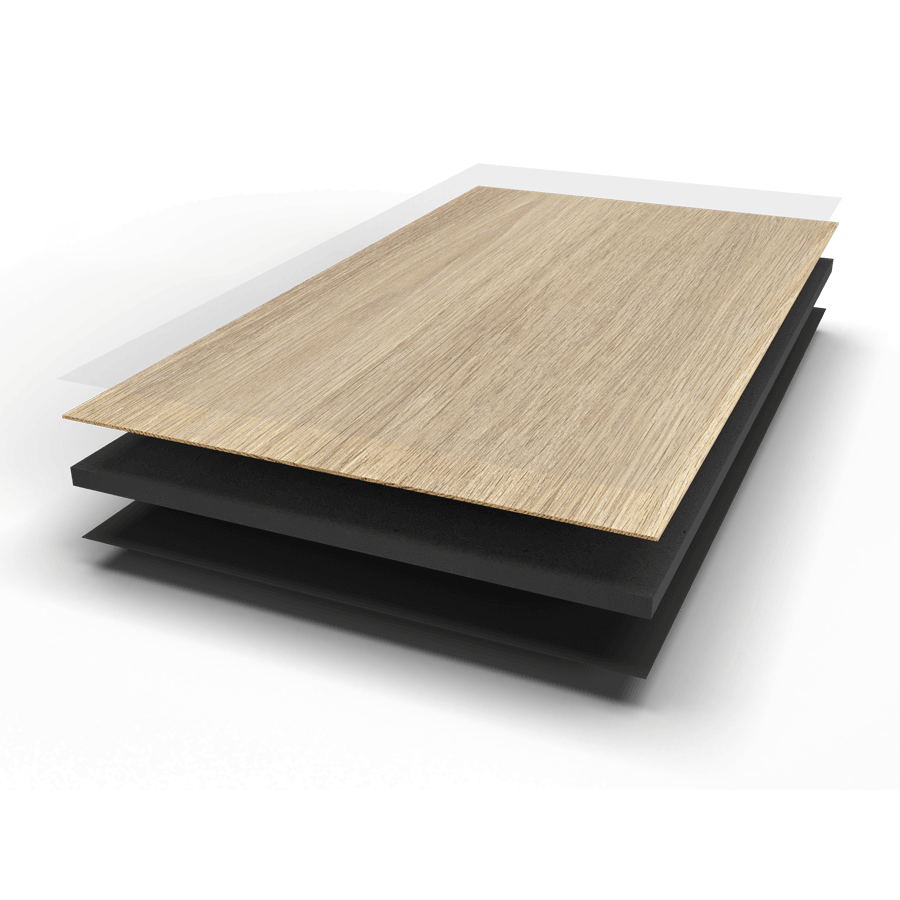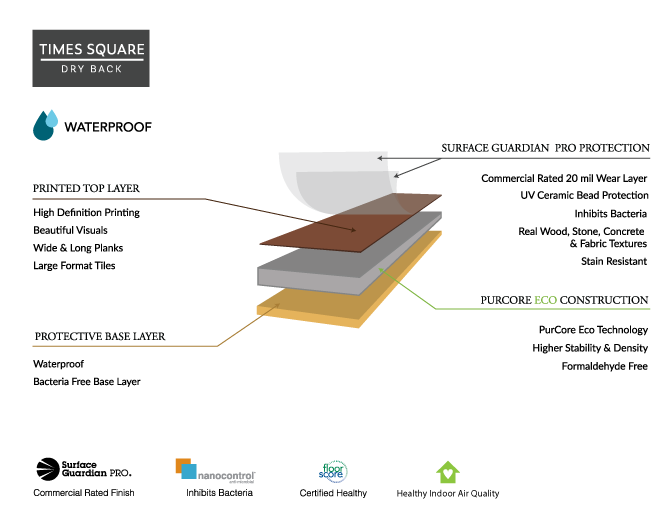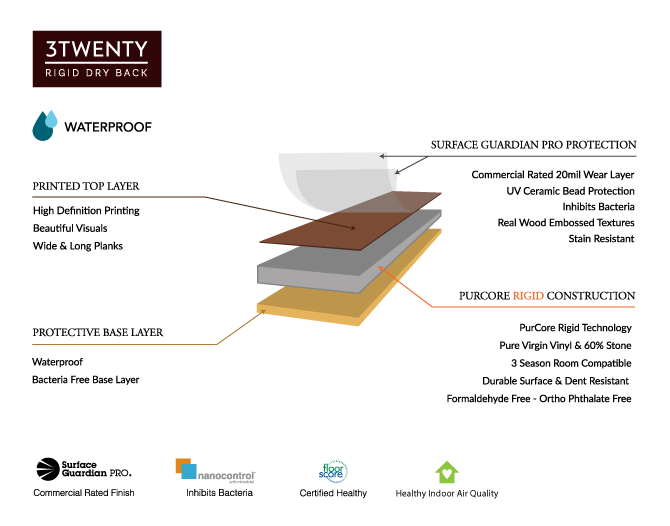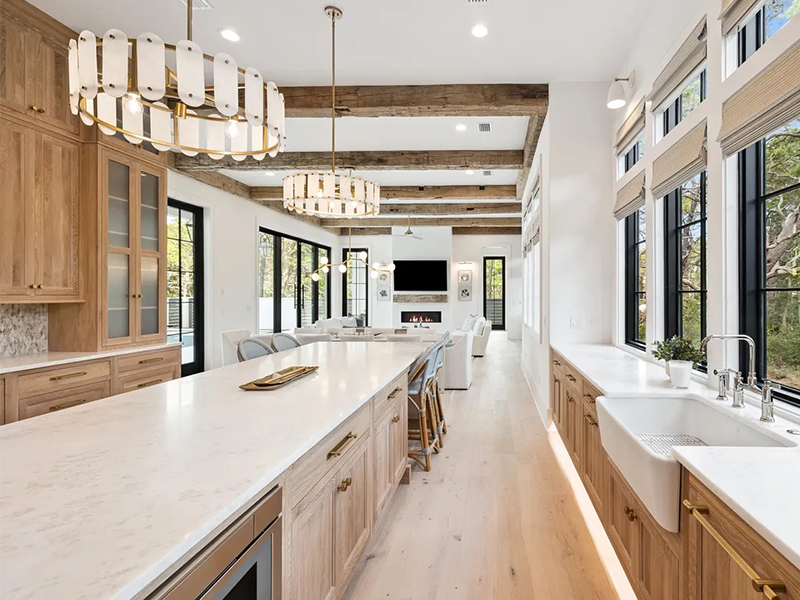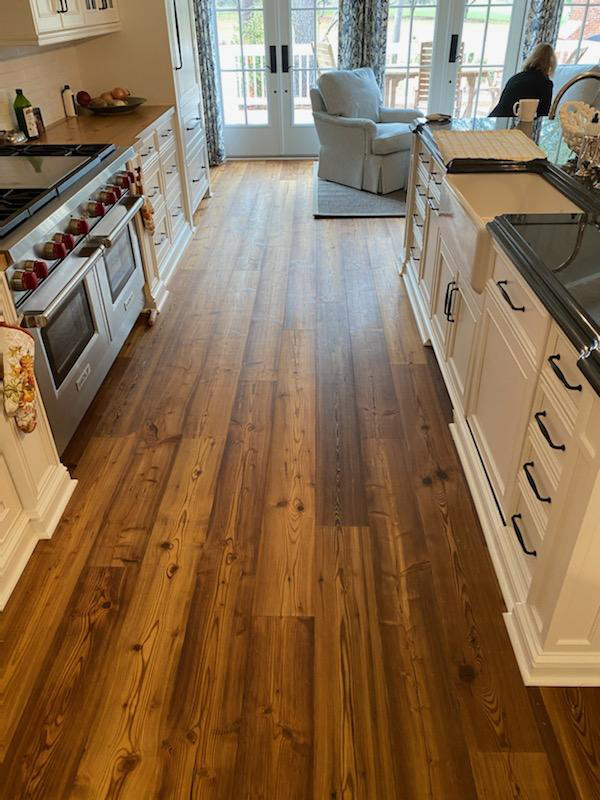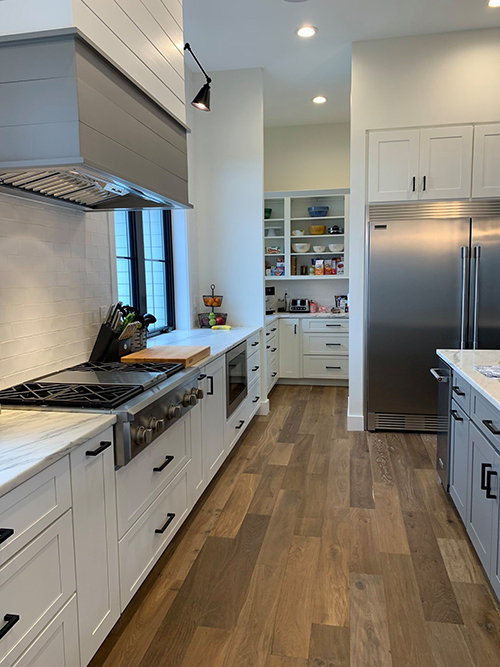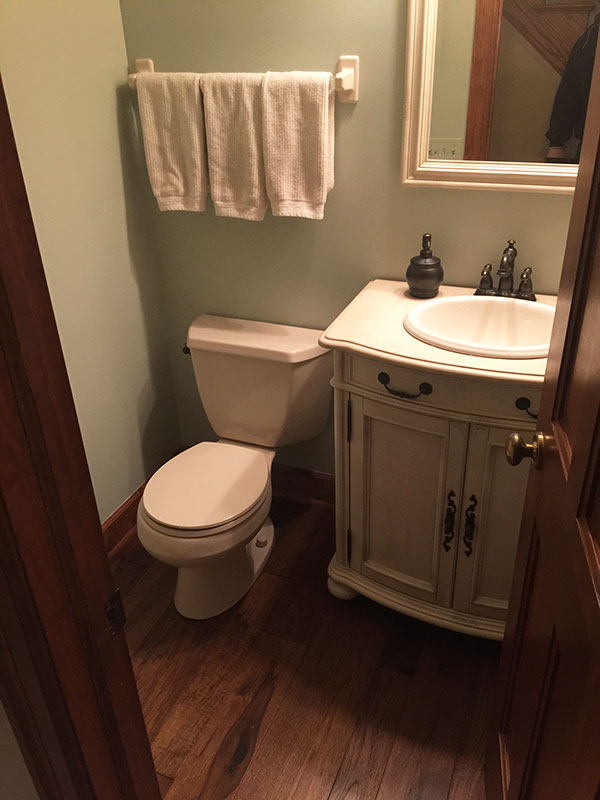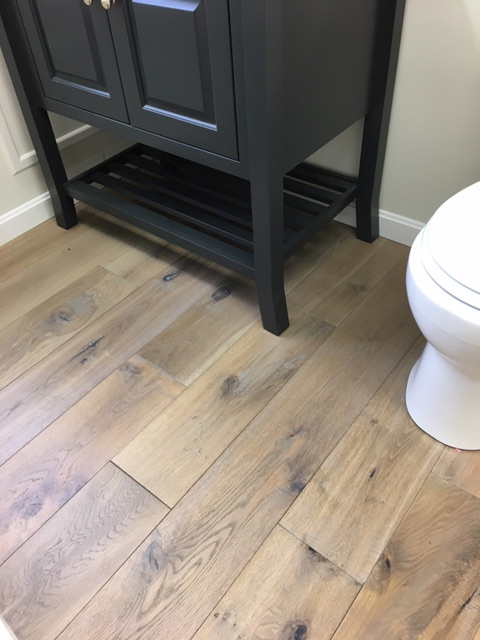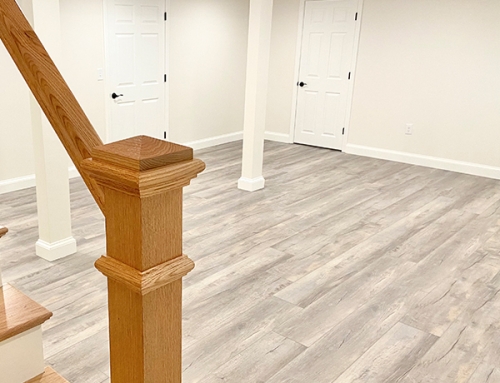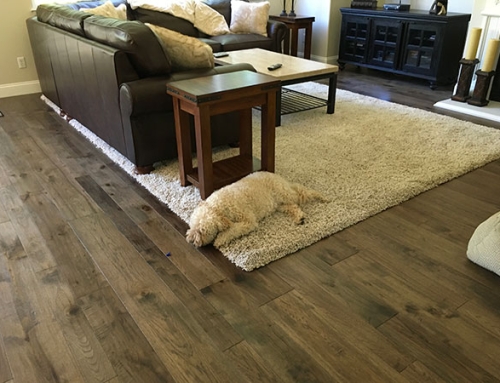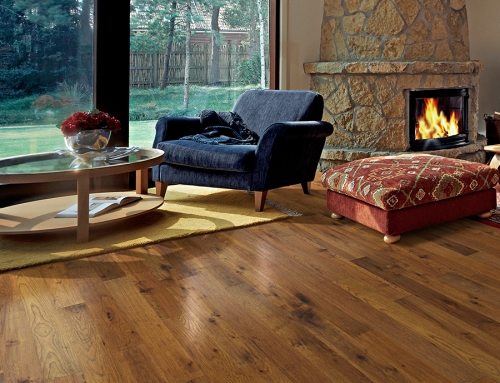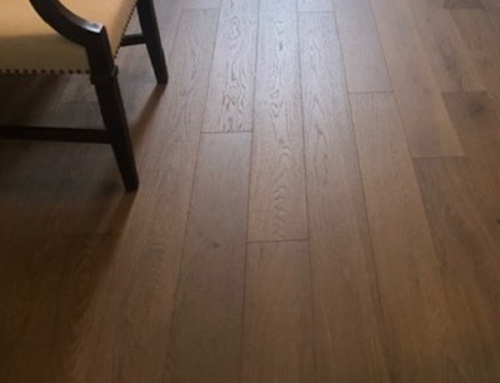Laminate Wood Floors
Waterproof, Durable and Stylish
The first step forward is to learn how to choose the right laminate wood floors that will suit the spaces of your place.
1. Determine the Required Durability (The AC Rating)
The Abrasion Class (AC) rating is the international standard for laminate durability. This is the most important technical factor to consider based on the room’s usage.
| AC Rating | Suitable Use | Typical Location |
|---|---|---|
| AC1 | Light Residential | Closets, guest bedrooms (very low traffic) |
| AC2 | General Residential | Bedrooms, dining rooms (low to moderate traffic) |
| AC3 | Heavy Residential | The most common choice for all areas of a home. Living rooms, hallways, kitchens, busy areas. |
| AC4 | Light Commercial/Heavy Residential | Great for busy households with kids/pets, home offices, small boutiques. |
| AC5 | Heavy Commercial | Public buildings, department stores. (Usually overkill for residential use.) |
💡 Expert Tip:
For general residential use, AC3 is the minimum recommended. If you have a busy household with pets, active children, or an entryway that sees a lot of foot traffic, AC4 is a worthwhile investment for extra peace of mind.
2. Choose the Thickness (Impact and Sound)
Laminate planks typically range from 6mm to 12mm (excluding the underlayment). Thickness is not the sole measure of durability (that’s the AC rating), but it has a huge impact on feel, sound, and installation tolerance.
☑ 8mm: A good balance of cost and performance for most residential areas like bedrooms and living rooms.
☑ 10mm – 12mm: Recommended for high-traffic areas, main living spaces, and for a more premium, solid feel.
✪ Benefits of Thicker Planks: They are more forgiving over slightly uneven subfloors, provide better sound dampening (less “hollow” click noise), and are often more rigid and stable.
3. Consider Water Resistance (For Kitchens and Bathrooms)
Traditional laminate has a wood fiber core and is susceptible to swelling if exposed to standing water.
☑ Water-Resistant Laminate: Suitable for kitchens and dining areas where spills occur but are cleaned up quickly.
☑ Waterproof Laminate: Features a fully synthetic core (like vinyl/WPC) or a fully sealed wood core with an extra locking mechanism. Essential for bathrooms, laundry rooms, or basements where moisture and humidity are high.
✪ Attached: Some planks come with a foam backing pre-attached, simplifying installation.
✪ Separate: Allows you to choose a premium product, such as a thick rubber underlayment for maximum sound reduction.
4. Select the Style and Finish (Aesthetics)
Laminate excels at mimicking natural wood, but the appearance can vary widely:
☑ Color: Light Colors (e.g., pale oak, grey): Make small rooms look larger and brighter.
✪ Dark Colors (e.g., espresso, mahogany): Create a cozy, intimate, or formal atmosphere. Can show dust more easily.
☑ Surface Texture:
✪ Smooth: A polished look, often resembling hardwood with a smooth finish.
✪ Embossed/Textured: A slightly textured surface that mimics the grain of wood. This hides minor scratches and scuffs better.
✪ Embossed-in-Register (EIR): The most realistic option—the texture perfectly matches the printed wood grain pattern underneath.
☑ Finish/Gloss:
✪ Matte/Low Gloss: Most popular, hides imperfections well, and provides a modern/natural look.
✪ High Gloss: Sleek and formal, but shows scratches more easily.
5. Don’t Forget the Underlayment
Laminate is a floating floor, so an underlayment is nearly always required.
☑ Purpose: Provides a moisture barrier, sound insulation (dampening the hollow sound), and a slight cushion.
☑ Options:
✪ Attached: Some planks come with a foam backing pre-attached, simplifying installation.
✪ Separate: Allows you to choose a premium product, such as a thick rubber underlayment for maximum sound reduction.
Is Laminate Wood Flooring Really Waterproof?
That’s an excellent and very common question! The short answer is: It depends on the specific product, and you need to pay close attention to the difference between “waterproof” and “water-resistant.”
Most traditional laminate wood floors are water-resistant, but not truly waterproof. However, newer, high-quality products are now engineered to be genuinely waterproof.
Here is a breakdown of the differences:
WATER RESISTANT LAMINATE (TRADITIONAL)
Core Material: Typically made of High-Density Fiberboard (HDF), which is wood-based.
Protection Level: The surface wear layer is resistant to spills and splashes.
The Catch: This type of flooring can only resist water for a limited time (often specified as 24, 48, or 72 hours). If water seeps into the seams or is left standing for too long, the wood-based core will absorb it, causing the planks to swell, warp, and buckle.
Best For: Living rooms, bedrooms, and hallways where spills are infrequent and quickly cleaned up.
WATERPROOF LAMINATE (NEWER TECHNOLOGY)
Core Material: The core is often made from a special composite material (like WPC or SPC) or a highly-treated HDF with resins that is impervious to water.
Protection Level: It’s designed to be 100% impervious to water, meaning the water will not penetrate the core, even if left standing for a prolonged period. The planks also have a watertight locking system and a waterproof seal.
The Catch: While the plank itself is waterproof, you still need to be careful that water doesn’t seep underneath the floor to the subfloor through the edges of the room, as this can still cause mold or damage to the subfloor.
Best For: High-moisture areas like kitchens, bathrooms, laundry rooms, and basements.
💡 A Critical Tip When Shopping
Read the Warranty/Specs: Always look for a clear, written “Waterproof Warranty” that covers the product against swelling from topical moisture exposure for a specified time.
Don’t Rely on Marketing Terms Alone: Some brands use “waterproof surface” or “extremely water-resistant” when the core is still susceptible to damage if water gets into the seams. Truly waterproof laminate will explicitly state that the core itself is waterproof.
If you are putting laminate in a high-moisture area, make sure to look for products specifically labeled as “waterproof” and check that the core material is non-wood or specially treated.
Why is Laminate Wood Floors Important?
Laminate wood flooring is important because it offers a combination of cost-effectiveness, durability, and aesthetic versatility that makes the look of hardwood accessible to a wider range of people and applications.
Here are the key reasons why it’s a popular and important flooring choice:
✓ AFFORDABILITY AND VALUE
Cost-Effective: It is significantly less expensive than natural hardwood or premium stone flooring, allowing homeowners to achieve a high-end look without the high price tag.
Budget-Friendly Renovation: It’s an excellent option for large-scale renovations or for those working with a tight budget.
✓ DURABILITY AND MAINTENANCE
Scratch and Wear Resistant: The tough, transparent wear layer on top makes it highly resistant to scratches, dents, and fading from sunlight, making it ideal for high-traffic areas and homes with pets and children.
Easy to Clean: Laminate is low-maintenance, requiring only regular sweeping or vacuuming and occasional damp mopping. Unlike real hardwood, it never needs sanding or refinishing.
Moisture Resistance: Moisture Resistance: While not fully waterproof unless specifically labeled, most modern laminate is resistant to spills and moisture, making it suitable for areas like kitchens and dining rooms.
✓ AESTHETIC APPEAL AND VERSATILITY
Realistic Look: Thanks to high-resolution image layers, laminate can closely mimic the look and texture of many different natural materials, including various wood species (oak, maple, etc.) and even stone or tile.
Wide Variety of Styles: It comes in a vast selection of colors, textures, and plank sizes, allowing it to match almost any interior design style, from traditional to modern.
✓ INSTALLATION
DIY-Friendly: Many laminate products feature a simple click-lock or “floating floor” system, which makes installation relatively quick and easy for homeowners to do themselves, saving on labor costs.
In summary, laminate flooring is a key player in the flooring market because it provides a practical, durable, and affordable way to achieve the coveted aesthetic of wood


